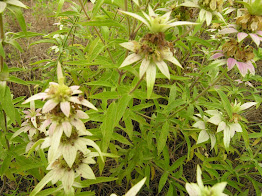Over the past ten years, I have been led on a journey which took me totally by surprise. This journey strengthened my testimony of the Book of Mormon more than anything else in the world. I have read and studied this book from cover to cover countless times from 1981 to present day, and I know without a shadow of a doubt that it is “Another testament of Jesus Christ. What took me a step further in my testimony was the journey as to where the Book of Mormon lands are located.

2005: Fifteen years ago, my two oldest daughters attended college in Alabama: one at Auburn University and the other in Montgomery, Alabama (Huntington College). Many times we would drive up to visit them there which took 3 to 3 ½ hours each way. Driving back and forth presented a lot of time to think and ponder. Sometimes the Spirit would impress upon my mind interesting information. One of those being about some of the early people who lived in Alabama before the Europeans arrived. I would see in my mind men running with girded loins and bare chests in and out of the wooded areas as I drove by. I never really thought much of it until later on.
2014: During this year I started finding and watching some videos about the Heartland Model talking about Promised Land from The Book of Mormon being in the United States. This was an interesting idea as all I’ve heard was that the Book of Mormon lands were in Central America. I never understood all of that information and it was confusing to me especially with the idea of having two Hill Cumorahs. How can there be two Hill Cumorahs? There is no way to me that Moroni could drag all of those plates, sword of Laban and the Liahona from Central America to New York State. There must be more to all of this.
2015: With several weddings to attend in Utah, my family and I stumbled on a conference at the UVU Conference Center in Orem in April which promoted the Heartland Model. I know that nothing happens by accident and as I attended the conference I felt that I was being taught some Book of Mormon truths. After pondering the Heartland Model for ten years I felt that I really knew the people of the Book of Mormon and where they lived. I bought and read an interesting book called Prophesies and Promises by Bruce H. Porter and Rod Meldrum which explained the whole Heartland Model in a very simple and easy to understand manner.
May 2020: After finding the Zarahemla site on Facebook, I contacted the site manager and asked if they were in need of volunteers to help with their expedition in August of 2020. We were planning a trip back east anyway, but had not made final plans. I was overjoyed to find that my services would be greatly appreciated and planned to meet this group in August in Nauvoo to help with writing their blog.
August 2020: My experience in Nauvoo, Illinois and Montrose, Iowa was a highlight of my life. The Lord was with us the whole way and we were able to learn about some of the point places of the Book of Mormon:
· Both the families of Lehi and Mulek crossed the Atlantic Ocean
· The place of Lehi’s Landing is Florida, near Pensacola.
· The place of Mulek’s Landing is the Great Lakes Area
· The Land of Nephi covers all the Tennessee and surrounding areas.
· The River Sidon is the Mississippi River
· The battle fought in Alma 2 between Amlici and Alma was near Montrose Iowa and Nauvoo Illinois.
· The Land of Zarahemla stretched from Nauvoo, Illinois to Montrose Iowa.
· The Hopewell culture in the United States are the Book Of Mormon Nephites
· The only Hill Cumorah is in New York State
· The early Native American people living in the East, came from the East.
· The United States of America is the Promised Land of the Book of Mormon

















